A number of Singaporean brands that are eyeing a spot in the local market must develop unique value propositions and a strong following. Connection with the home market is seen as a first step in securing legitimacy and strengthening a fighting chance in the bigger arena. There is, of course, the quality of product and services, but in a space where consumers increasingly demand engagement, the brand story becomes another pillar of success.
This is not an easily accomplished task, however, given the crowded local market and the competition they face running alongside, if not directly against, established brands. A few have taken shortcuts by inventing a narrative that they hope would lend them the credibility and earn the loyalty of a new generation of customers. Such newly minted backstories are rich in nostalgic cultural and historical references that they hope would elicit an emotional response. But a savvy, constantly engaged market can smell such tricks that can, despite the quality of product and services, work against the brand.
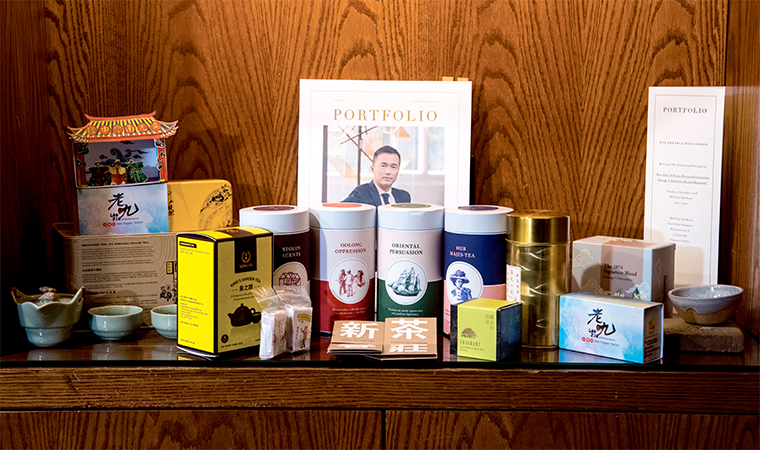
A few brands, however, are very fortunate to possess authentic histories; they are already steeped in tradition, and have been serving their niche markets for several decades. For them meeting market expectations does not require make-believe stories – they are already there, repeated and passed on by word of mouth. Despite this, and given the level of competition in the local market, they must still find ways to stand out to keep their loyal following satisfied as they engage a new generation of customers.
Is an authentic brand story enough to sustain an enterprise as it transitions towards engaging new customers? When does legacy become a burden that holds a brand back from being received by a changing market? How can one tell if change has become necessary in a longrunning business? How does one introduce innovation without disrupting valuable tradition?
We invited three entrepreneurs who are continuing the family tradition started by their forebears, and the input they are introducing to ensure longevity without disturbing legacy.
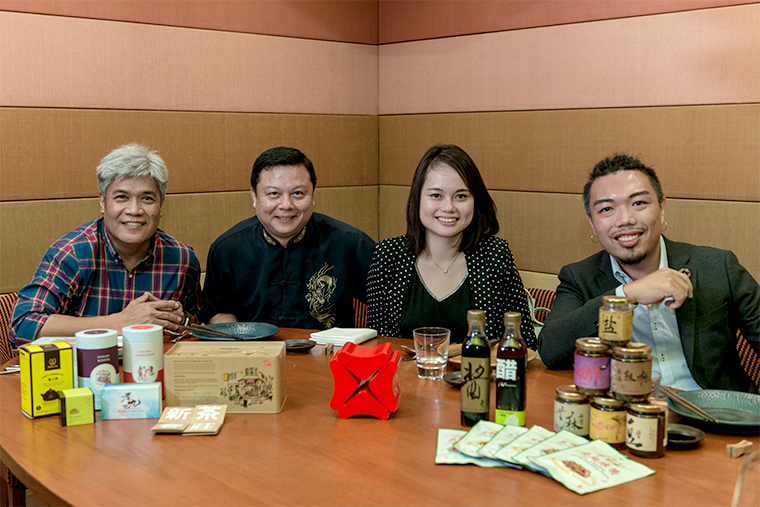
- PEK SIN CHOON
- KWONG WOH HING
- DISH THE FISH
- JOINING THE FAMILY ENTERPRISE
- CONNECTING AND ENGAGING
Pek Sin Choon
Its establishment in 1925 makes Pek Sin Choon among the oldest surviving tea merchants in Singapore. One will be hardpressed to find anyone who hasn’t come in contact with the brand, which has cornered between 80 and 90 per cent of the bak kut teh market, a popular local delicacy. The mention of ‘Shepherd Boy on A Buffalo’ or ‘Renowned Unknown Fragrance’ brings delight to everyone. People may not necessarily recall the brand Pek Sin Choon, but they remember the indelible connection that its teas have with their lives.
Pek Sin Choon has since diversified its product ranges through the years, branching out from loose tea leaves to tea accessories and gift packages. Its teas are enjoyed from the neighborhood bak kut teh stalls to people’s homes all the way to fine dining establishments.
Mr. Kenry Peh, a third-generation family member, is involved in running the business that remains with the family.
- PEK SIN CHOON
- KWONG WOH HING
- DISH THE FISH
- JOINING THE FAMILY ENTERPRISE
- CONNECTING AND ENGAGING
Kwong Woh Hing
Before the Japanese occupation in the late 1930s, Mr. Woo Hoh came to Singapore from southern China and worked at a local soya sauce factory. This would provide him with an opportunity to create and perfect his own recipes for fragrant soya sauce and black sauce, which are staples in most local household and commercial kitchens.
After years of saving and perfecting his own recipes, he ventured out to set up his own sauce factory on Lavender Street, naming it Kwong Woh Hing Sauce Factory. Sustained successes saw the company relocating to bigger and more suitable premises; in 1960, it production moved to Lorong Tai Seng, and in 1980 to Defu Lane. This year, the factory will move to new premises – bigger and more suited to the volume of its production.
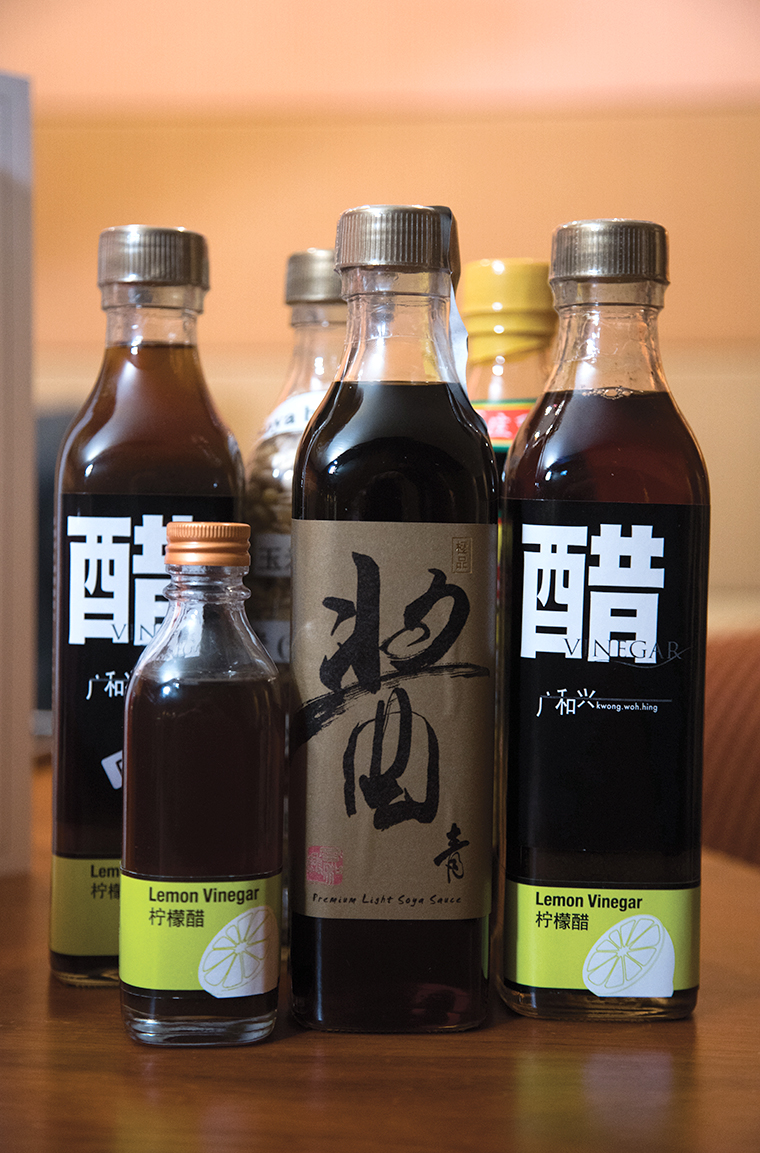
Besides the soya and black sauce, Kwong Woh Hing has begun manufacturing an extensive range of condiments and sauces that local households are familiar with, from soya beans to chili, plum, lemon and sambal. It also produces vinegar that is promoted as a health drink.
Mr. Dickson Woo is a third-generation member of the family involved in the business.
- PEK SIN CHOON
- KWONG WOH HING
- DISH THE FISH
- JOINING THE FAMILY ENTERPRISE
- CONNECTING AND ENGAGING
Dish The Fish
With wet markets losing its grip on younger customers who favor the convenience, reliability and security offered by upscale supermarkets and direct suppliers, DishTheFish has come up with an idea to revive interest in buying fish from the market among younger customers by going digital.
Co-founder Mr. Jeffrey Tan, who comes from a family of fish wholesalers and fishmongers, has applied his extensive knowledge of business IT to DishTheFish, a fishmonger business with a digital twist. Together with his wife, Ms. Angeline Ong, who trained in finance, they created a business model that elevated customer service through Big Data and e-commerce platform.
A newcomer to the fish vending trade and the family with long years in the business, Ms. Ong has found her place and is fully involved in the enterprise that she and her husband have created.
- PEK SIN CHOON
- KWONG WOH HING
- DISH THE FISH
- JOINING THE FAMILY ENTERPRISE
- CONNECTING AND ENGAGING
Joining the Family Enterprise
“We started out in China where there is a strong belief that there is always hope in tea, that the trade is a way of helping next generation make a healthier choice,” says Mr. Kenry Peh. “Otherwise, there is no reason for us to remain in the tea business, especially today when you can go into the tech or property sector and make tons of money.” The primary objective is not centered on making profits, Mr. Peh clarifies, but a belief in tea culture. Keeping the business viable is seen as an expression of dedication to it. “Our business started within the immediate family; today, perhaps 60 per cent of the staff at Pek Sin Choon are not family members, but we have remained close – we treat them like a family – because we have established that bond through our common belief in tea culture.”
Mr. Peh emphasizes that being in the family business is not easy. “When you do well, people will think it’s because the business was handed to you, and you didn’t have to do anything to succeed.” If it fails, however, “people will say it’s your fault because you were already handed everything. If you haven’t tried and you gave up, then there’s nothing more to say. If you want to take up the challenge of running a family business built by your ancestors, do your best. Make it happen.”
In his younger days, Mr. Dickson Woo didn’t think about joining the family business. “I wanted to explore my options so I went to work in different places. I worked in a kitchen; I worked as a party host. I have a design background and I could have joined a design house, but as I grew older, the sentimental part of me kicked in. I started thinking about life values, and doing my part to prolong my family’s legacy.”
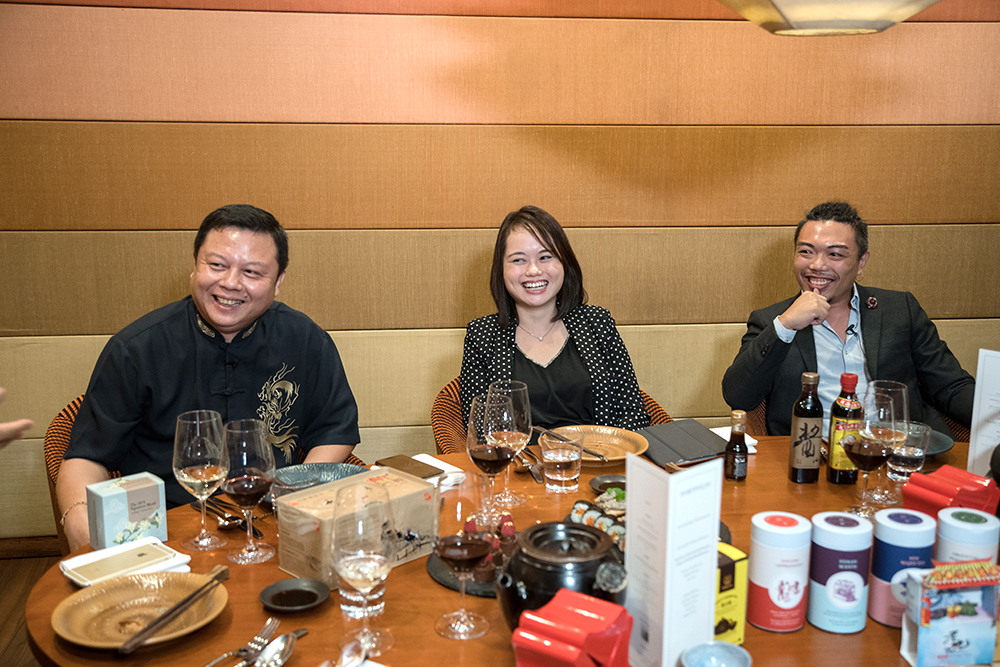
Mr. Woo found out that continuing a legacy and keeping it alive is more difficult than starting out on one’s own. “You have to follow the values set by your forefathers,” he explains. “Our responsibility is greater because we have to grow the business under constantly changing circumstances.” Times have changed and so has Kwong Woh Hing, and they had to constantly resolve the differences and evolve with the changes, he says. “The business itself has gone through many changes because of the economy and the changing demands from our customers. It has grown a lot since it was founded by my grandfather, and we have relocated the factory to more suitable places. We didn’t stay the same in many ways, but we are still keeping the values such as delivering quality products, constantly improving them, and always keeping in mind the customers. Those are part of the legacy that we want to continue.”
“I was not born into a family of fishmongers or people who work in this trade,” Ms. Angeline Ong clarifies, “but I was exposed to it early when I started going out with my then boyfriend (and now husband, Mr. Jeffrey Tan). His family has been fishmongers and I saw how hard they worked in order to sustain the business, how much they sacrificed to bring fish to other families’ tables, and how they took pride in what they did.”
Different it may be, but those sacrifices are now part of Ms. Ong’s motivation since she and her husband launched their own business. “We did not join the family business but we inherited the wisdom from it through my husband’s family.” Although theirs is an independently owned and operated business, they built its foundation on what Mr. Tan’s family have learned and experienced through the years. More importantly, they brought their own skills and knowledge to the trade.
“In the corporate world, I worked hard to make money for other people, and also to earn a promotion. Those are very different sets of motivation. To be honest, I sometimes look back at how comfortable my life was working in finance, but then I realized that I’m creating something where I am now.” When she first wrote her blog on the company website, Ms. Ong admits she didn’t know if somebody was out there reading it – but she decided to keep going. “Now that people have written back to us, saying how much they learn from my blog, how it has helped a young mother who is just learning to cook for her family, how some students at the Culinary Institute of America found our recipes interesting, I realize that I have found my place.”
- PEK SIN CHOON
- KWONG WOH HING
- DISH THE FISH
- JOINING THE FAMILY ENTERPRISE
- CONNECTING AND ENGAGING
Connecting and Engaging
Product presentation is a powerful way of engaging a new set of customers. For Kwong Woh Hing, this means creating new ranges and packaging for their soya sauces. The premium range comes in a bottle labeled similar to a sake – with calligraphy and stamps reminiscent of Chinese seals in a golden background. One of the seals bears the company name that translates as Guang (after the family’s origin of Guangdong province in China) Peace & Prosperity, while the other indicates that the product belongs to the premium range.
The deluxe range label is retained – a very traditional design of flowers and illustrations in multiple auspicious colors. Kwong Woh Hing has also launched a selection of popular premixed sauces under a sub brand. It is a clever play on Singaporeans’ penchant for associating a famous hawker dish with the name of the street where it originated. The visual anchor is the hawker signboard rendered by hand. Although some of the associations are made up, they make the products easy to remember in a fun, local way. Mr. Woo emphasizes that they are able to offer high quality pre-mix sauces, in a market saturated with such products, because of their in-house manufacturing capability.
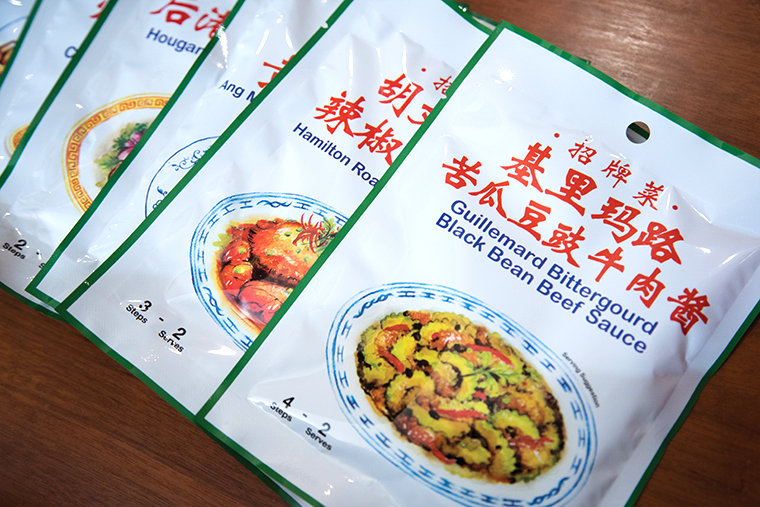
“I come from a very traditional family business; we are generally resistant to change, but recently, we have been doing a few collaborations to bring awareness to the market. Our business is about educating people, so we have been working with some local companies who share the same values and direction with us.” They have supplied ingredients – and positive branding – to such popular novelties as dark soya sauce and soya sauce gelato, as well as the chee cheong fun ice cream. “They’re sold out everyday,” Mr. Woo adds, proving that a Singaporean classic is already in the making.
Meanwhile, Pek Sin Choon is proving itself a leader among homegrown brands in terms of marketing. With only one core product, it has found ways to reach out to younger and modern customers. It has been creating corporate gift sets for a law firm comprising a tea set and an elegantly packaged premium grade tea leaves. “Giving tea as presents go back to ancient China,” explains Mr. Peh, “where members of the imperial family were traditionally given tea as the highest form of respect.”
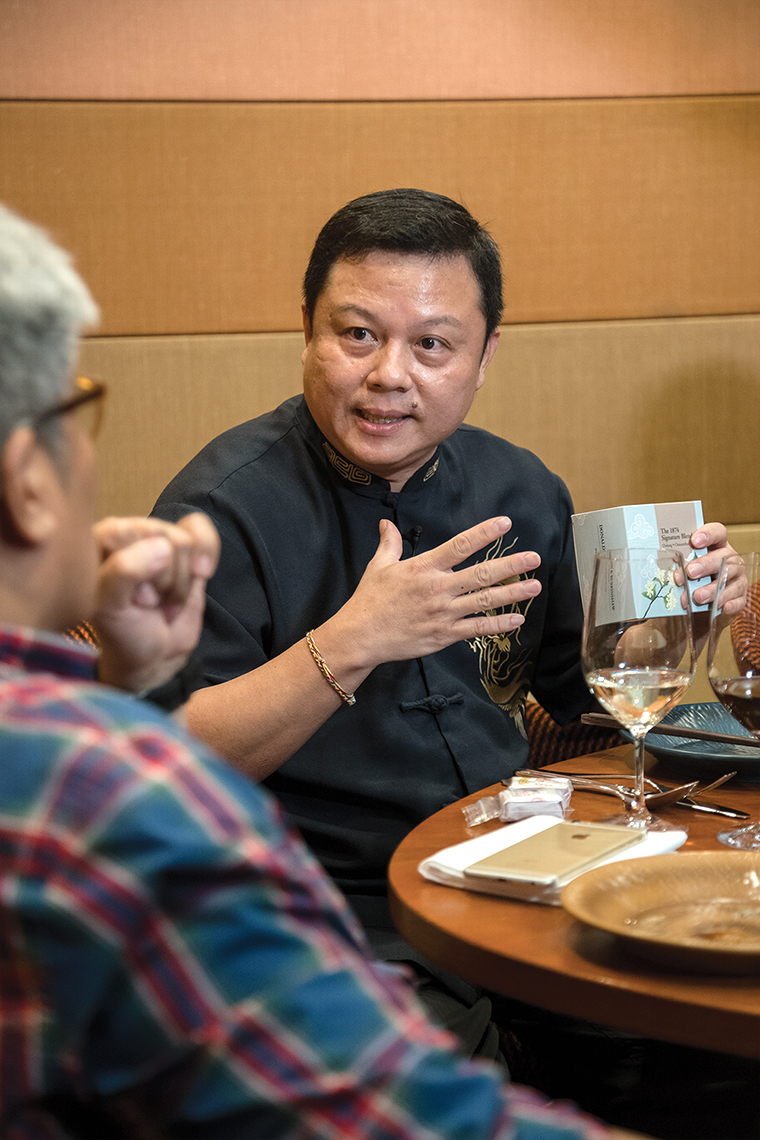
A recent success is the brand’s Heritage Portable Tea Brewing Combo Set, a multi-purpose gift pack that comes in tea box which can be used as portable tea table, a coin bank or a simple storage – all of which resonate strongly with local culture. The tea set consists of a custom-made, limited edition Shepherd Boy on Buffalo teapot with a lid and two tea cups. Also included in the box are custom-sized house blend tea leaves with Nanyang flavors in traditional paper wrappers.
For Dish The Fish, customer engagements mostly happen online, on www.dishthefish.com.sg – which Ms. Ong has turned into an e-commerce platform with an online ordering system, and an educational section that talks about fish varieties, cuts and quality, recipes and preparation methods. Its popular blog engages customers with feedback mechanism. Their social media platform is another way of keeping in touch with their customers. Using cloud technology, they are able to keep track of retail and online sales, commercial and customer communications.
Dish The Fish has also introduced vacuumpacked fillets and pre-packed bags that make buying fish more convenient and safe. They have also started conducting cooking demonstrations in malls as part of their public awareness campaign.





-ADiN.jpg&w=347&h=240&crop-to-fit)


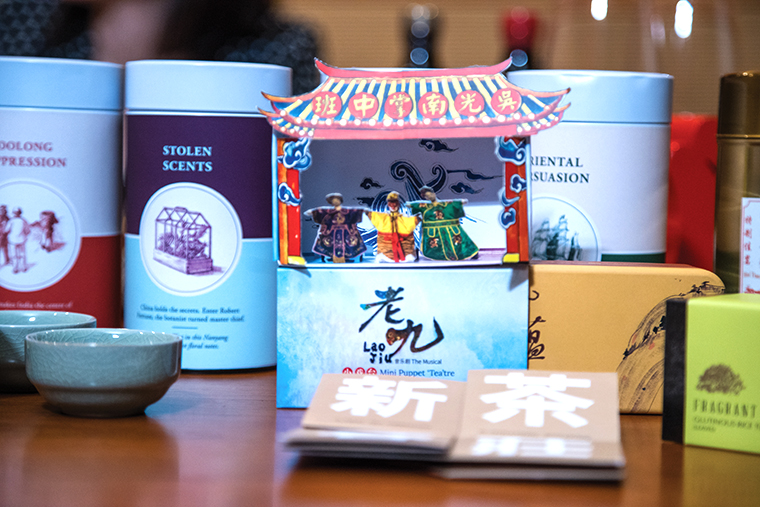
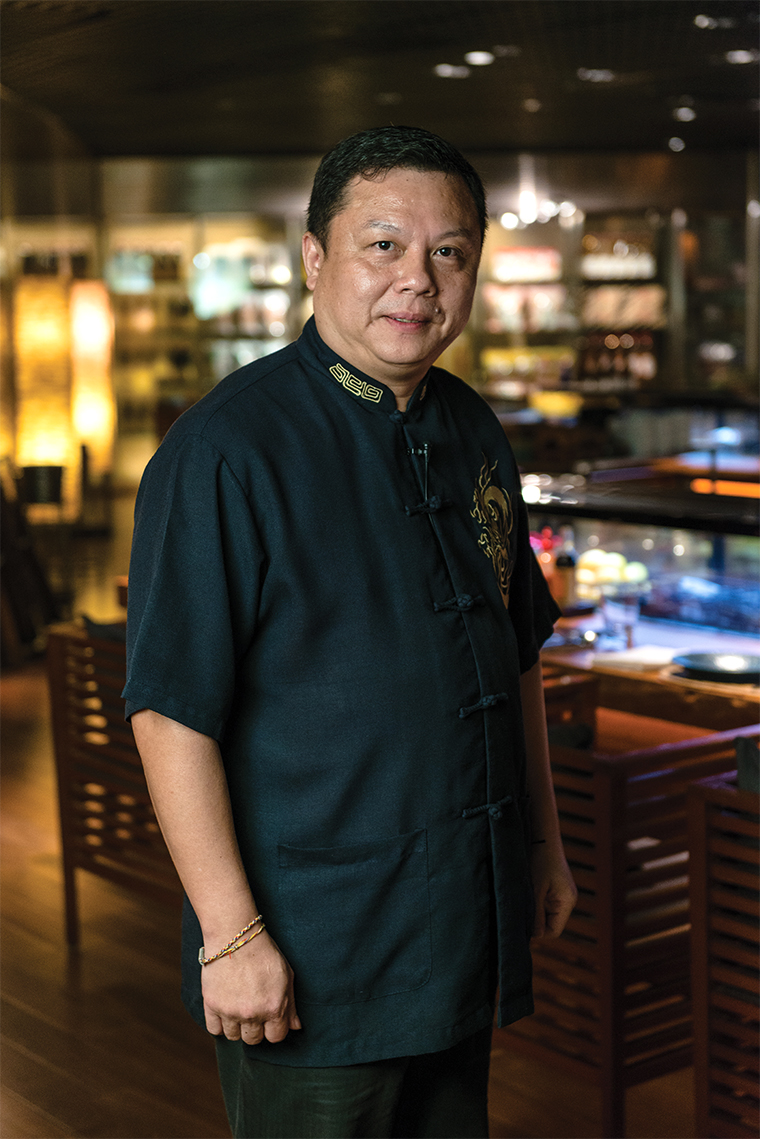

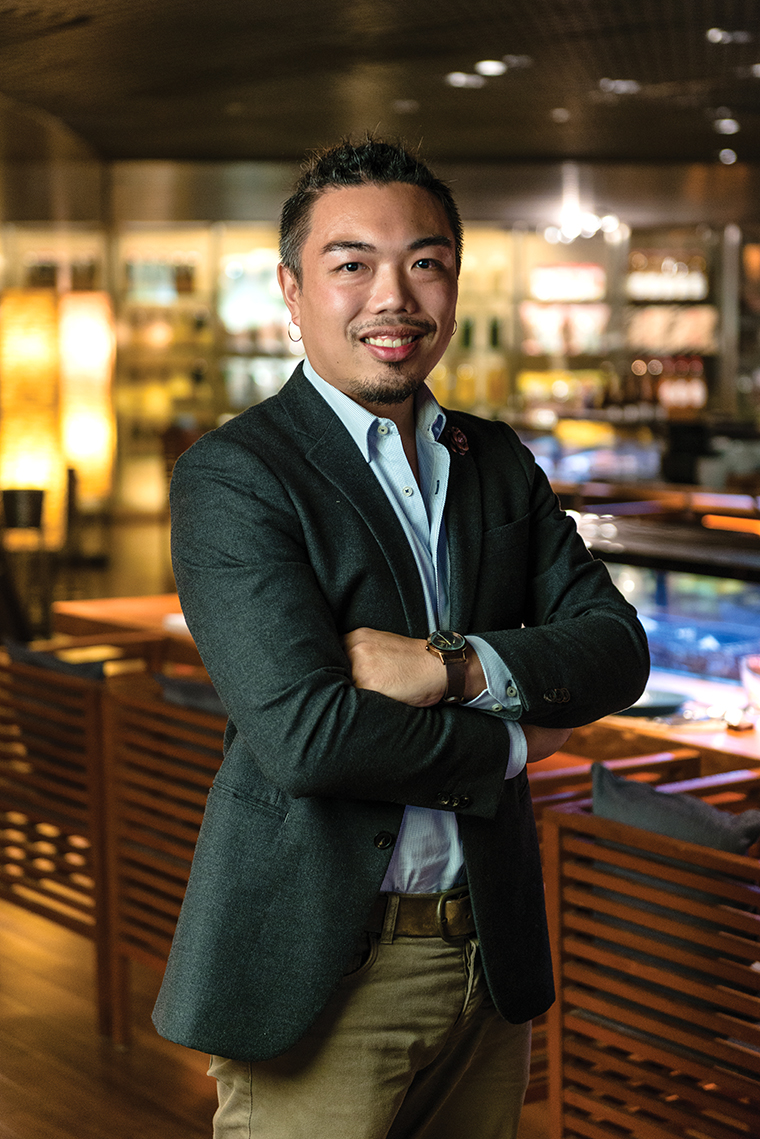




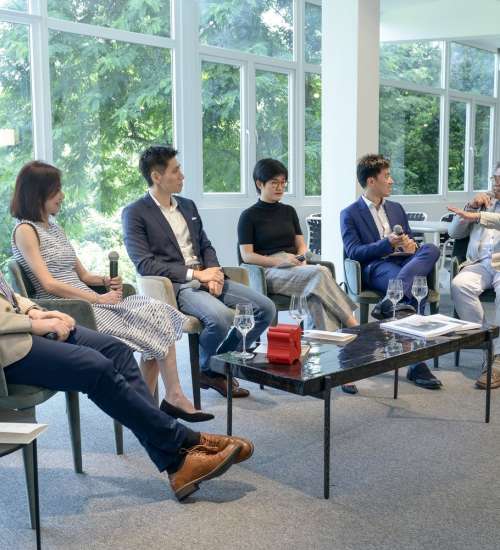



 Back
Back
